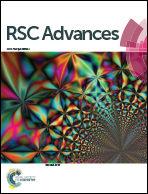Experimental and theoretical study of CO2 adsorption by activated clay using statistical physics modeling
Abstract
The objective of this paper was to study CO2 adsorption on activated clay in the framework of geological storage. The activation of clay was characterized via scanning electron microscopy, N2 adsorption–desorption isotherms, and X-ray diffraction. The adsorption isotherms were generated at different temperatures, namely, 298 K, 323 K, and 353 K. Based on the experimental result, a new model was simulated and interpreted using a multi-layer model with two interaction energies. The physicochemical parameters that described the CO2 adsorption process were determined by physical statistical formalism. The characteristic parameters of the CO2 adsorption isotherm such as the number of carbon dioxide molecules per site (n), the receptor site densities (NM), and the energetic parameters were investigated. In addition, the thermodynamic functions that governed the adsorption process such as the internal energy, entropy, and Gibbs free energy were determined by a statistical physics model. Thus, the results showed that CO2 adsorption on activated clay was spontaneous and exothermic in nature.



 Please wait while we load your content...
Please wait while we load your content...